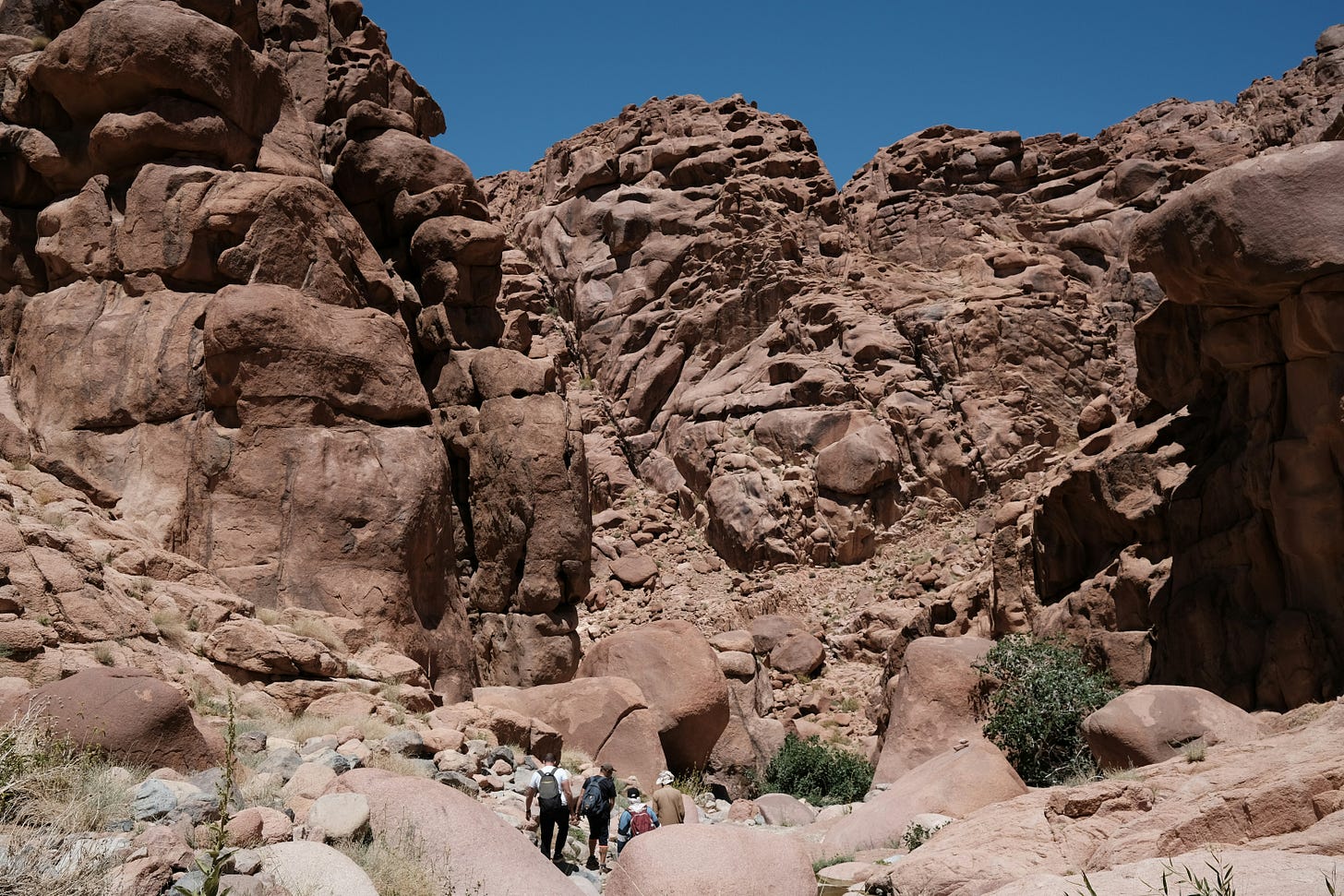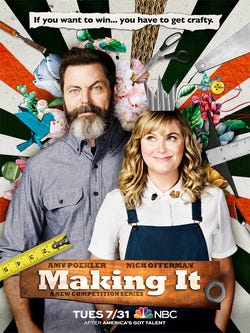I loved the TV show Making It with Amy Poehler and Nick Offerman because the heart of the show was something that is close to my own heart: creativity belongs to everyone. It was a TV show about people…making things! It was incredible to see what the creators on the show came up with from things you could find around your house. I discovered a whole new respect for anything made out of Styrofoam. My husband and I were so sad when the show was cancelled after its third season. It was a tribute to everyday creativity and made heroes out of everyday creators.
I loved the show because it brought “art” out of “the fine art only a genius can make” realm and placed art into the hands of everyday people. It’s the same reason I love The Great British Bake-Off. GBBO let’s ordinary people bake their hearts out week after week instead of watching professional bakers being put through their paces with one outrageous bake after the other on Food Network. I stopped watching the Food Network after I became addicted to GBBO. I’d much rather watch the amateurs that have been set up to succeed (mostly) than professionals who have been given impossible tasks.
These shows celebrate something our culture often forgets: art isn’t reserved for geniuses. Art is for everyone. This isn’t just my opinion: It’s rooted in my faith: we create because we are made in the image of a Creator. In a previous post, When You Find Chaos: Create, I explored the reason why human beings are creators: we are made in the image of God. God is first and foremost a creator, and God made us in her/his/their image. Therefore, we are creators by nature.
Writers like Amie McNee (whom I adore, partly because she swears like a sailor) describe this universal creative impulse beautifully. She believes that every, single person needs to make art to be wholly who they are. She also believes in art for art’s sake, and not just how it can be monetized. I love this paragraph from the introduction of her just released book: We Need Your Art:
I believe you are on this planet to make art. I believe we all are. Making art is the ultimate human act. The impulse to create is instinctual, untaught, innate to us as a species. I could talk (and I do) to literally anyone and discover that somehow, somewhere, even under the most debilitating circumstances, they are currently creating something or have an idea about something they want to make. Denying art is denying your nature. The act of creation makes a better version of you. It gives you purpose, agency, and challenge. It demands that you explore the caverns of who you are and discover what lives within— the beautiful and the messy.
Creating art is instinctual and innate because that is how God made us. I think this paragraph also encapsulates the reason why consumer culture belittles everyday art: because creating “gives you purpose, agency, and challenge.” It means we can be content, joyful, and happy without buying stuff.

This spiritual dimension of creativity reminds me of a fascinating biblical example: the Israelites creating The Tabernacle in the Wilderness. In Exodus 35:4—36:7, we read the story of the beginning of the creation of The Tabernacle. It begins with the people bringing and donating all of the things that are going to be needed for the creation of Israel’s traveling worship space. Then Moses tells the people:
Look, [God] has chosen Bezalel, Uri’s son and Hur’s grandson from the tribe of Judah. [God] has filled him with the divine spirit that will give him skill, ability, and knowledge for every kind of work. He will be able to create designs, do metalwork in gold, silver, and copper, cut stones for setting, carve wood, do every kind of creative work, and have the ability to teach others (Exodus 35:30-34, all Scripture is from the Common English Bible).
We are not only created to be creators, but God also sends the Holy Spirit to help us in our creative work. Creating is so important to God, that part of the reason she sends her Spirit is so we can learn the skills, abilities, and knowledge we need to be creating our own art and creating new worlds for people to live in, or worship in.
The Israelites didn’t know it at the time, but they were going to be wandering around in the desert for 40 years. They were going to need a visual reminder that God was with them, and they needed a physical place to worship God—a place that could travel with them. So God inspired them and gave them the skills they needed to make this worship space.
People willingly gave of both their property and creative skills: “All the skilled women spun cloth with their hands, and brought what they had spun in blue and purple and deep red yarns and fine linen. All the women who were eager to use their skill spun the goats’ hair (35:25-26). And “every other skilled worker whom [God] has given skill, ability, and knowledge for the work of building the sanctuary do all that [God] has commanded (Exodus 36:2).”
Together they built what would be the political, religious, and spiritual center for the people of Israel for the next 400-500 years until the Solomon’s Temple was built.
Just as the Israelites pooled their creative gifts to build something sacred together, I see similar potential in our creative communities today—including right here on Substack. What can we build together? This is one of the things that excites me so much with Substack: All of us creators sharing our art and reaching out to each other. Cole Haddon posted a note today about writers on Substack putting out a book together!
I love all of the individual creations I see here, but I am also wondering what communal art is going to come out of Substack. I hope to be part of some of the community projects that will come. Just as the Israelites in the Wilderness created a space of worship, we can create spaces of love, inclusion, inquiry, accountability, compassion, and equality. We can literally Make It!
What are you creating these days? I’m trying my hand at fermentation with sauerkraut and a ginger bug. What community creations are you thinking about or would like to be a part of? I’d love to be included in a book of short stories or something to do with the Bible. I think there could be a lot of wonderful projects combining visual arts with the written word.
What can we create together? How can we make that happen?





I love your invitation to create something beautiful but I believe this space we share together can be utilized for and is perhaps going to become the center for innovation, disruption and shape our culture, tradition and even our political structure and I am excited to see it unfold right here
What a beautiful invitation… what can we create 🙌🏻